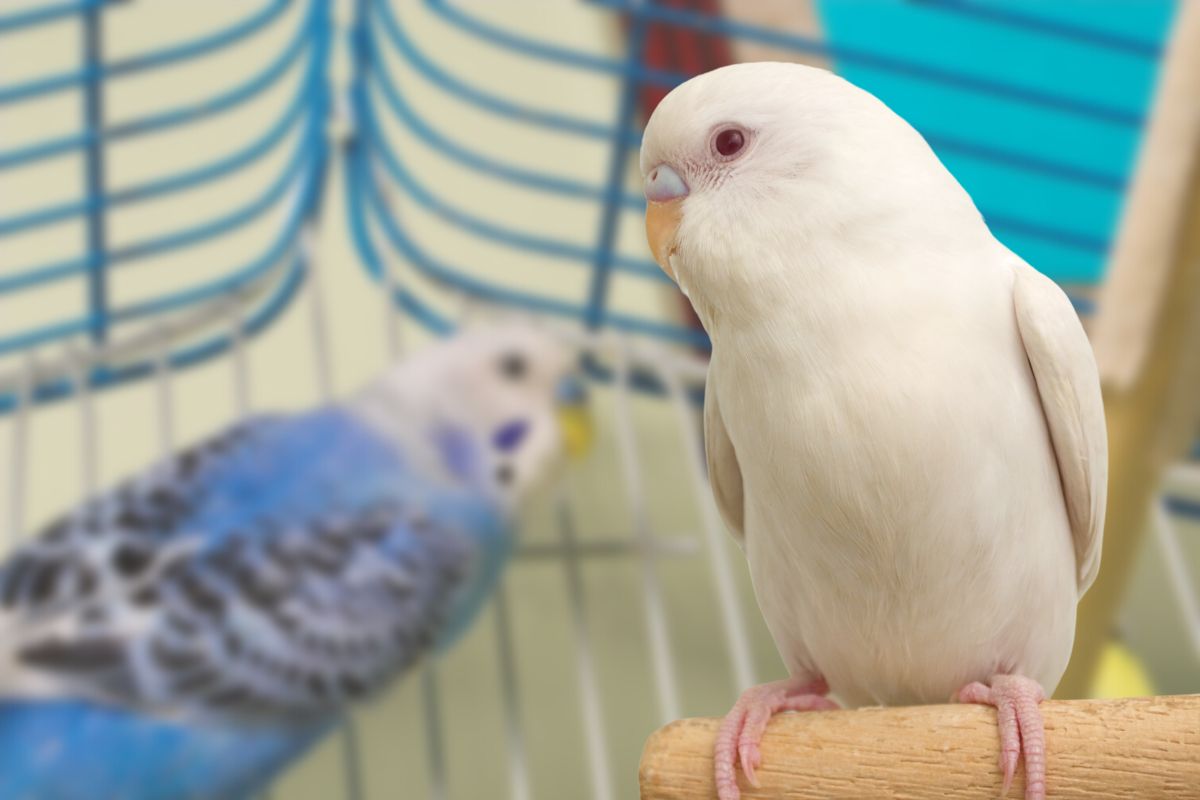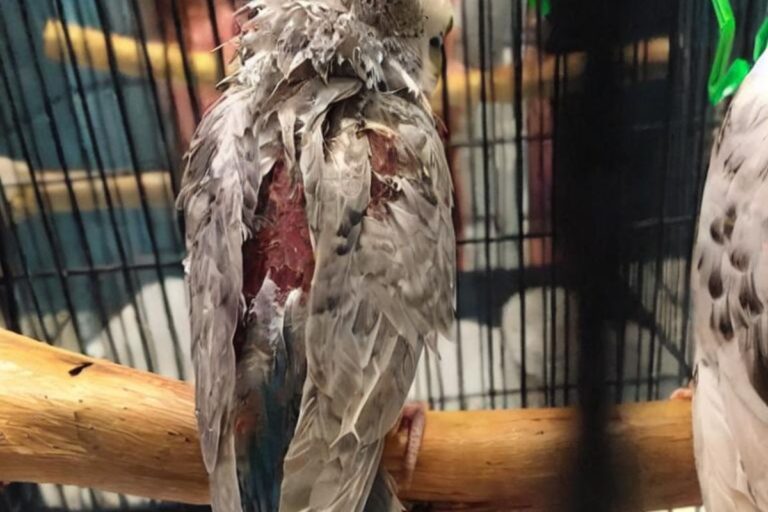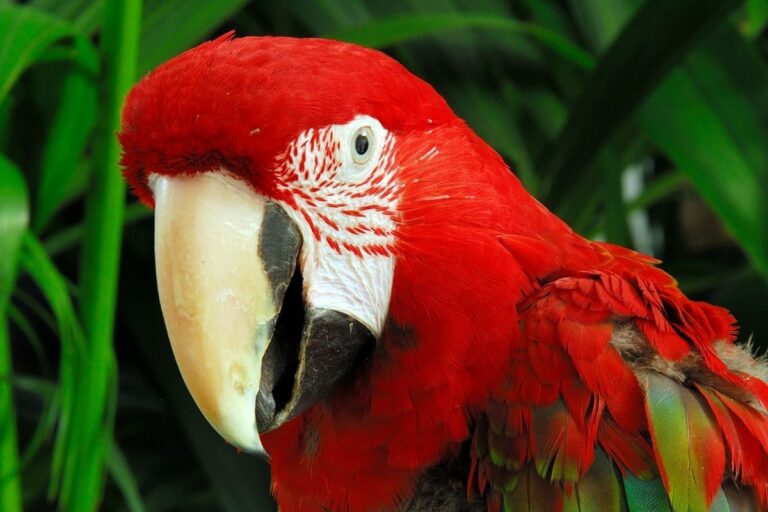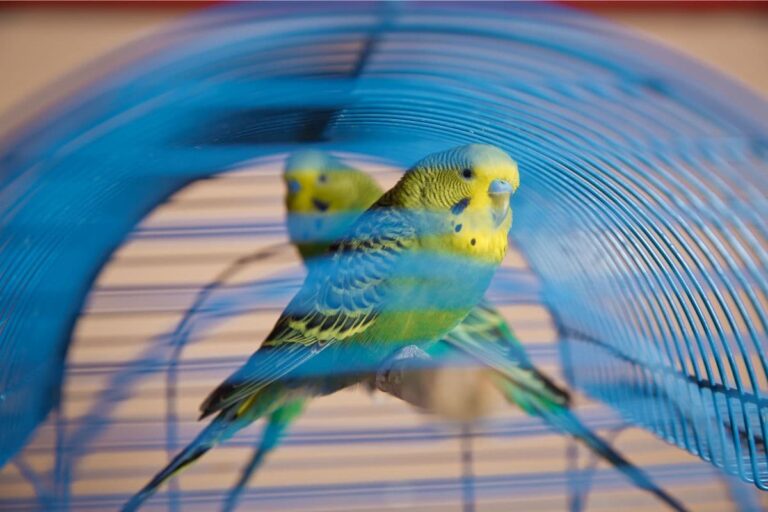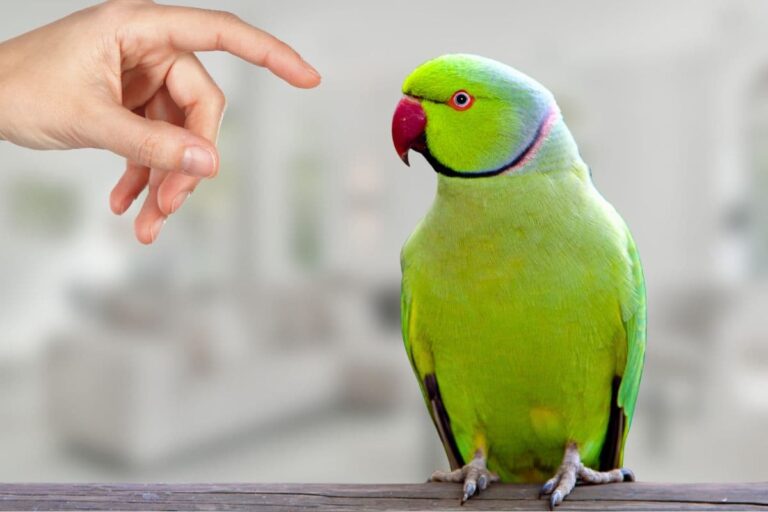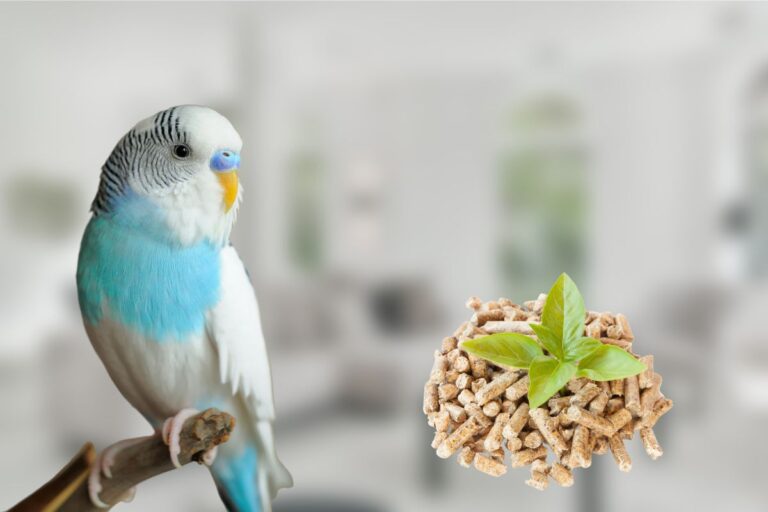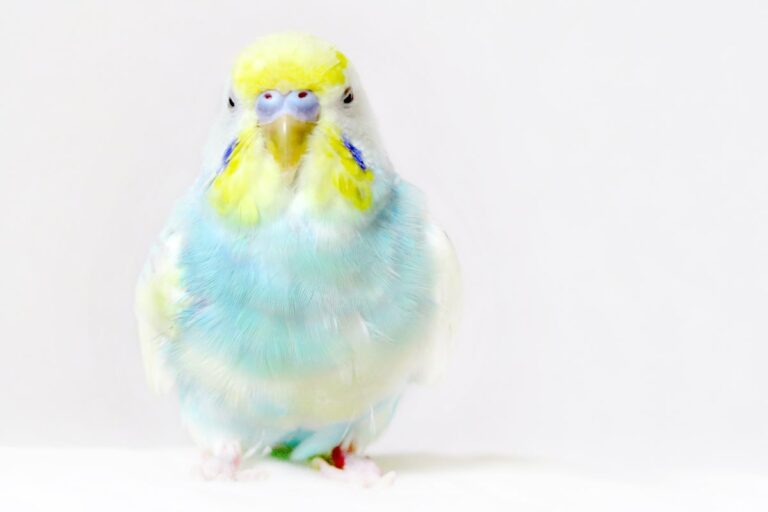Are Albino Parakeets Rare
Disclosure: The opinions expressed in this post are my own. This post may also contain affiliate links, which means that I will receive a commission if you decide to purchase through my links, at no additional cost to you. As an Amazon Associate, I earn from qualifying purchases.
To some, albino parakeets are one of the most beautiful and exotic-looking pet birds available. They are also quite rare, which can make them difficult to find and purchase. Albino parakeets have a very striking appearance, with their all-white feathers and red eyes. This unique combination of colors makes them a highly coveted bird among bird enthusiasts. While they may be difficult to find, owning an albino parakeet can be a truly rewarding experience.
If you’re thinking about getting an albino parakeet, here are a few things you should know.
What is an Albino Parakeet?
Albinism is a genetic condition that causes individuals to lack pigment in certain areas of their body. In animals, this occurs when there’s not enough melanin produced by cells called melanocytes. The result is that these animals who are albino will appear completely white or pale yellow in color due to the lack of dark pigmentation. Albinism is more common in animals than it is in humans because many species do not produce as much melanin as we do. That’s why you’ll sometimes find albino animals in your local pet stores.
Albinos are often referred to as “albino” or “pale.” However, the term “albino” actually refers to any animal that lacks pigmentation. So while albinos are usually described as having no pigment at all, they can also have patches of dark skin or hair.
What Causes Albinism in Parakeets?
Albinism is a congenital disorder that is caused by the lack of melanin pigment in the skin, hair, and eyes. While the exact cause of albinism is unknown, it is believed to be caused by a mutation in the gene that controls melanin production. Albinism can affect any animal with fur or feathers, but it is most commonly seen in parakeets. There are two types of albinism that can affect parakeets-Complete absence of melanin pigmentation (Type I) or Partial loss of melanin pigmentation (Type II).
There is no cure for albinism since it’s a genetic disorder, but there are treatments that can help affected birds live healthy and happy lives. Incomplete loss of melanin (Type II) parakeets typically have better vision than those with complete absence of melanin (Type I), but they also tend to suffer from more health issues. Treatment options for Type I albinism include providing the bird with supplem
Do Albino Budgies Have Health Problems?
Parakeets with albinism have a higher risk of developing skin cancer and vision problems. In addition, they also have a higher risk for developing other health issues such as malnutrition and behavioral problems. Because of this, it is important for owners to take care of their birds and ensure that they receive proper care if they are diagnosed with albinism.
Otherwise, albino budgies are just as healthy as any other budgie, but there are a few things to be aware of. Because they lack pigment, they are more susceptible to sunlight and should be kept out of direct sunlight. They are also more prone to developing cataracts, so regular checkups with an avian vet are a good idea.
Although albino birds don’t get sunburned like how we do, they may be still be prone to skin cancer from long exposure to the sun rays, especially to their eyes, beaks, toes and tip of wings.
How Do You Know If Your Parakeet Has Albinism?
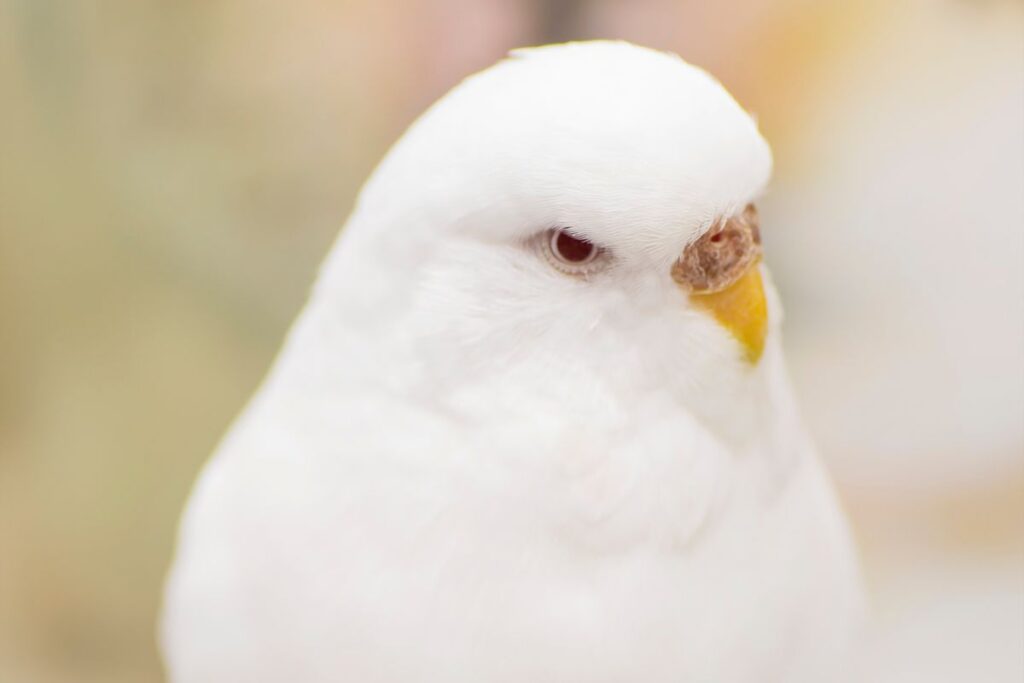
The easiest way to tell if your parakeet has albinism is to look at its iris. Most albinos have red or pink irises, but some may have blue or green ones. If your pet has a red eye, he or she probably has albinism.
You can also take a closer look at the feathers on your parakeet’s head. Many albino birds have white feathers around their face and neck area. Some even have white spots on their wings.
If you’re unsure about whether or not your pet has albinisms, contact your local veterinarian. He or she can help determine what kind of albinism your pet has and what steps need to be taken to keep him or her safe.
How Do You Determine the Gender of an Albino Parakeet?
You’d usually be able to tell the gender of a parakeet by looking at the color of their ceres, where males tend to develop blue, rose or purple ceres, and females tend to develop a tan or brown color. However due to albinism, their cere colors tend to be pink or lavender in color for both sexes, making it difficult to identify their gender visually.
There are still a few ways to tell the difference between male and female albino birds. One way is to do a DNA test. You can purchase a DNA test kit and do it yourself (check out the Pollygene Gender Discovery Kit that provides results in under 48 hours with 99.99% accuracy). Or you may also take your feathered friend to the vet to assist with DNA sampling.
Another way to tell the difference between male and female albino parakeets is by looking at their behaviors. Male albino parakeets are usually more outgoing and playful than females. They are more needy for human interaction and often have a habit of begging for food. Females are generally quieter and more independent. They tend to be more aggressive and territorial, and may attack other birds when they feel threatened.
What Are The Different Types of Albino Parakeets?
There are two main types of albinism that can affect parakeets; oculocutaneous albinism (OCA) and ocular albinism (OA), with the former being the most common type.
Oculocutaneous albinism occurs when the melanin pigments in the body’s hair follicles, eyelashes, eyebrows, and iris are missing. This means that the bird will appear completely white.
Ocular albinism is characterized by the absence of melanin in the retina of the eye. It is less severe than OCA because there is still some pigment present in the retina.
Albino birds can also be born with a condition called leucism, which causes patches of white fur to grow all over their bodies, except the eyes. Leucism is not a genetic disorder, but are instead defects in pigment cells during development.
Are Albino Parakeets Blind?
Albino parakeets are not blind, but they may have blurred vision and be more sensitive to light. They may also have trouble seeing certain colors. Because of this, it’s important to provide them with dark areas to rest in so they don’t get too much sun exposure.
How Long Do Albino Parakeets Live?
If you are wondering if albino parakeets live shorter lives, then the answer is generally no. Albinism is not associated with mortality, but it could reduce the survivability of the parakeet due to the lack of protection to UV radiation from extended exposure to sunlight.
Albino parakeets are not a separate species of bird but rather a genetic mutation of the normal variety. They have a similar lifespan to other parakeets of 7 to 15 years in captivity.
Can Albino Parakeets Breed?
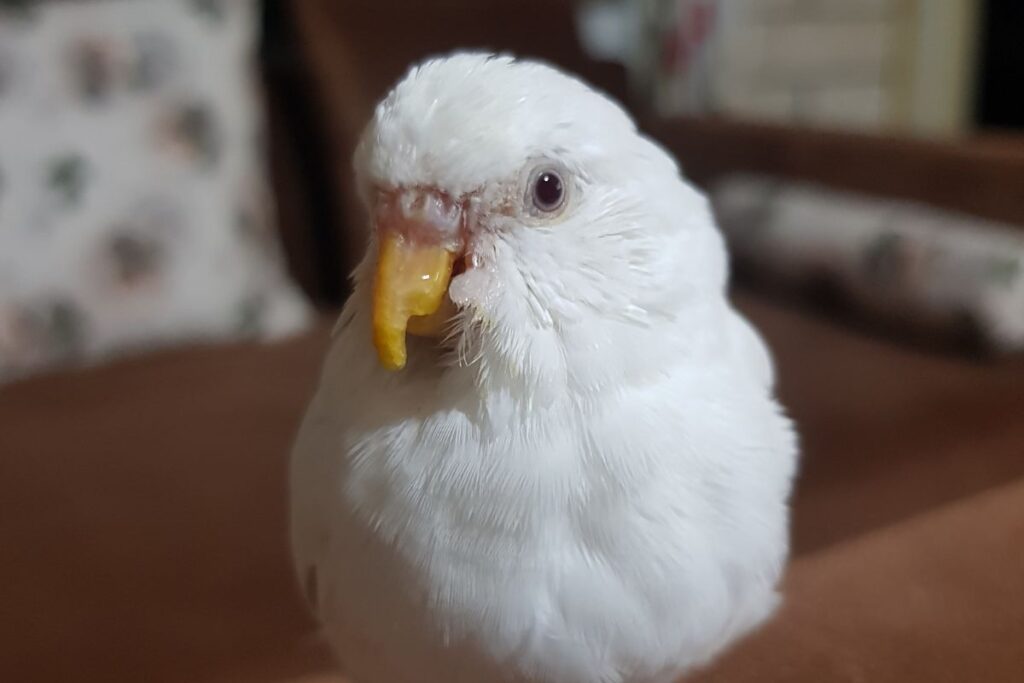
Yes, albino parakeets can breed, regardless of this condition. Albino parakeets are able to breed with other parakeets of the normal variety or albino variety.
If both male and female parakeets have the same recessive albino gene, the offsprings can be expected to be albino too.
If only one parent has the albino gene, then the offspring will be heterozygous for the trait. Heterozygotes are carriers of the albino gene and are not affected by the disease.
However, if both parents carry the albino gene then the offspring will be homozygous for the trait and will be affected by albinism.
How Much are Albino Parakeets Worth?
There is no real definitive answer to this question since Albino parakeets are not currently being mass-produced for the pet market. This means that they are considered less common and, as such, can command a slightly higher price tag than more common parakeet varieties.
If you are intent on purchasing an Albino parakeet, be prepared to pay anywhere from $50 to $100 USD. This price range will likely fluctuate depending on the current demand for these birds, so it is always best to do your research before making a purchase.
What Is The Right Way To Take Care Of An Albino Parrot?
Assuming that you are wanting to know how to take care of an Albino parakeet, I would give the same care as I would for any other parakeet.
First, you need to make sure that your parakeet has a good quality diet. A lot of times people will feed their birds seed mixes that are full of fillers and not a lot of nutrition. A good diet for a parakeet includes a good quality seed mix, fresh vegetables, and some pellets. The pellets should make up about 30% of their diet.
Second, you need to make sure that your bird has a spacious cage to live in. The bigger the better when it comes to cage size for a bird. They need enough room to fly and move around without being cramped.
Third, you need to provide your bird with plenty of toys and things to do. Birds are very active and love to play. Make sure there are plenty of toys in their cage for them to chew on, swing from, and just generally play with.
Fourth, you need to make sure your bird has regular vet checkups. Just like any other pet, birds need to see a vet at least once a year for a checkup and vaccinations.
Lastly, you need to spend time with your bird every day. Birds are social creatures and love attention from their human companions. Take some time each day to talk to your bird, play with them, and just spend some quality time together.
Conclusion
Albino parakeets may need slightly more care due to their condition, but they are just about as healthy as the normal variety. They have a very striking appearance, with their all-white feathers and red eyes, and are loved by parakeet enthusiasts. This unique combination of colors make them sought after by some parakeet owners. Some breeders choose to keep these traits in their breeding program, to add more color variations.
If you’re lucky, you may be able to find one at your local store, but be prepared to shell out a little more money for them as they are less commonly found.



